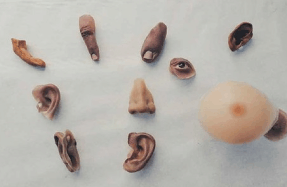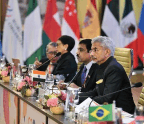

On 4 May, a crowd of Tamils gathered in a small tent by the roadside in Vavuniya, a city in Sri Lanka’s Northern Province. Behind them was a wall plastered with the photos of family members who were last seen in the custody of the Sri Lanka Army. Many held up photos of those forcibly disappeared, not only as reminders of their loved ones but in the hopes of being reunited with them. It was a sombre demonstration that garnered minimal international coverage. They had been protesting for almost two thousand days and had received little attention, and much scorn, from the Sri Lankan government.
Meanwhile, on Galle Face, an oceanside urban park in Colombo, a very different protest was taking place. The sound of trumpets and drums blared into the night as Sri Lankans chanted, “Go Home Gota.” They hoisted the country’s flag, emblazoned with the Sinhala lion, as a sign of what they believed was national unity. The Guardian reported that people were describing the moment as “Sri Lanka’s Arab Spring.” Jehan Perera, the executive director of the National Peace Council of Sri Lanka—a Colombo-based NGO—told the newspaper that “people from all communities are coming out onto the streets, I have never seen it before.” One demonstrator told the BBC, “Look: the Muslims are here, the Hindus are here, the Catholics are here. All the same blood.” The same report quoted a Buddhist monk saying, “Sri Lanka has become one united nation.”
The Galle Face protest had begun on 9 April, after nearly two months of prolonged discontent, largely driven by severe uncontrolled inflation and a snowballing economic crisis. The crisis had grown under the rule of the brothers Mahinda and Gotabaya Rajapaksa, who had been prime minister and president, respectively, since November 2019. The Rajapaksa family, with a menagerie of cousins and nephews leading various ministries, has held a commanding influence in the country’s electoral politics since the mid 2000s. The majority of international reporting about the protests has pointed to them being sparked by the family’s grip over a failing economy and the country’s history of corruption. The reporting also seems to emphasise the increasing presence of China in Sri Lanka’s ballooning international debt,






